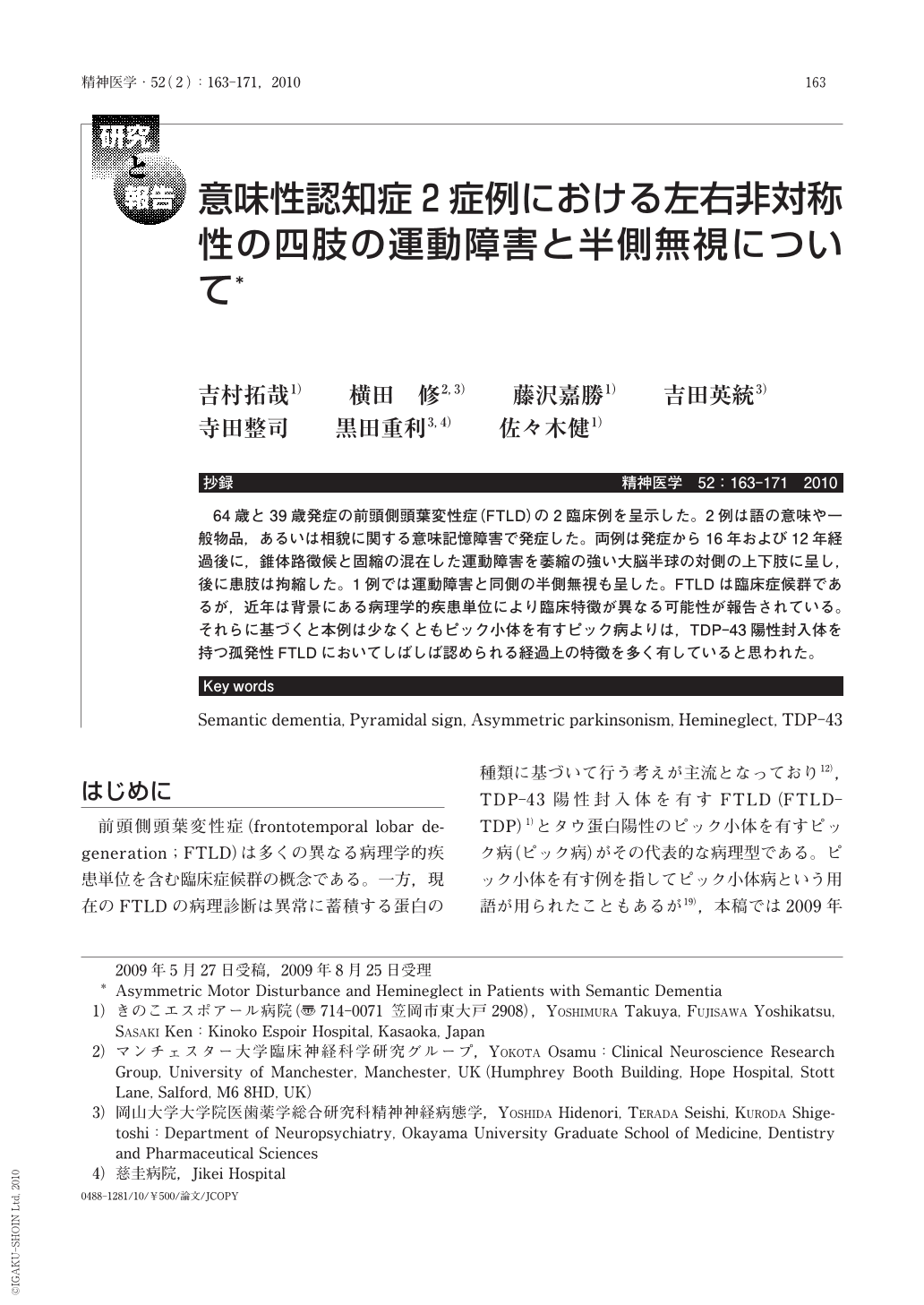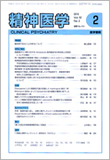Japanese
English
- 有料閲覧
- Abstract 文献概要
- 1ページ目 Look Inside
- 参考文献 Reference
- サイト内被引用 Cited by
抄録
64歳と39歳発症の前頭側頭葉変性症(FTLD)の2臨床例を呈示した。2例は語の意味や一般物品,あるいは相貌に関する意味記憶障害で発症した。両例は発症から16年および12年経過後に,錐体路徴候と固縮の混在した運動障害を萎縮の強い大脳半球の対側の上下肢に呈し,後に患肢は拘縮した。1例では運動障害と同側の半側無視も呈した。FTLDは臨床症候群であるが,近年は背景にある病理学的疾患単位により臨床特徴が異なる可能性が報告されている。それらに基づくと本例は少なくともピック小体を有すピック病よりは,TDP-43陽性封入体を持つ孤発性FTLDにおいてしばしば認められる経過上の特徴を多く有していると思われた。
We report the two patients who presented with semantic dementia and subsequent asymmetric motor disturbance characterized by pyramidal signs and parkinsonism. The first patient initially developed semantic memory impairment with respect to word meanings, common objects, and faces at the age of 64 years. She subsequently exhibited oral tendency, altered eating behavior, and hypersexuality. Sixteen years after the onset asymmetric motor disturbance occurred in the left extremities. Neurological examination revealed a Babinski sign on the left foot, rigidity in the left extremities, and left-sided hemineglect. Computed tomography revealed right side-predominant severe temporofrontal atrophy and moderate atrophy in the right precentral gyrus and inferior parietal lobule. The second patient initially exhibited semantic deficits with respect to word meanings and common objects at age 39 years and developed motor disturbance in the right extremities 12 years later. Neurological examination revealed heightened tendon reflex and rigidity in the right extremities. Magnetic resonance imaging demonstrated severe left side-predominant temporo-frontal atrophy and severe atrophy in the basal ganglia. Recent clinicopathological studies indicate that both semantic dementia and asymmetric motor disturbances including pyramidal signs and parkinsonism may be predictors of sporadic frontotemporal lobar degeneration with TDP-43-positive inclusions (FTLD-TDP) rather than Pick's disease. Although the pathological basis of clinical FTLD patients is composed of various pathological disease entities including Alzheimer's disease with atypical cerebral atrophy, given the previous findings, at least sporadic FTLD-TDP, rather than Pick's disease, is a plausible pathology in the present cases. Clinicians should assess motor function in FTLD patients throughout the course carefully. Whether occurrence of hemineglect is associated with the specific pathological disease entity is unclear at preset.

Copyright © 2010, Igaku-Shoin Ltd. All rights reserved.


